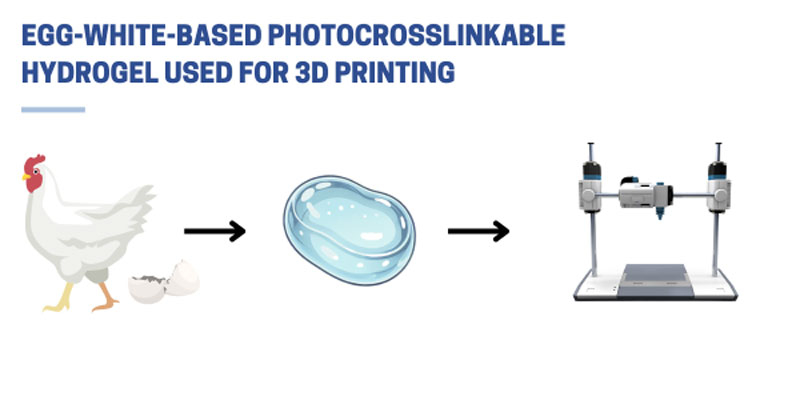Scientists from the United States have used protein from chicken eggs to create an ideal biological material for 3D printing of living tissues and even organs. Researchers endowed an ordinary protein with photopolymerization properties, allowing it to transform into three-dimensional models of arbitrary shape. This is a breakthrough for research in pharmacology, medicine and organ transplantation, although much work remains in this direction.

Image source: Terasaki
Today, a variety of natural and synthetic materials are used for 3D printing of living tissues. All of them have their advantages and disadvantages, but they all have exactly one thing in common – the high cost of solutions against the backdrop of limited capabilities. Scientists from the Terasaki Faculty of the University of California were able to turn ordinary protein from chicken eggs into a hydrogel for 3D printing of living tissues. The solution turned out to be as cheap as it was effective with an impressive set of properties.
Materials for 3D printing must be able to retain the shape of the model, which is not possible with ordinary chicken protein. To change this, scientists added methacrylic groups to the protein using methacrylic acid. One of the properties of this acid is photopolymerization, that is, hardening under the influence of light. The protein with methacrylic inclusions also turned out to be sensitive to light. When illuminated, it formed strong longitudinal bonds with the layers above and below, which made it possible to print a three-dimensional model.
Protein itself is not analogous to the human heart, liver, or even skin. But it creates the basis for the controlled growth of specialized cells, providing them with protection, nutrition and shape.
«This innovative approach to creating bioconstructs from egg whites demonstrates the enormous potential of bioengineered materials in tissue engineering, the scientists explain. “By using readily available natural resources and enhancing them through clever chemical modifications, we are opening up new possibilities for personalized regenerative medicine.” “Breakthroughs like these are critical in our quest to develop more effective and affordable solutions to treat multiple organ failure, cardiovascular disease and cancer.”